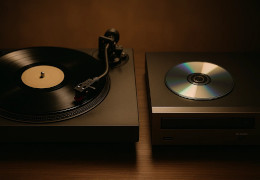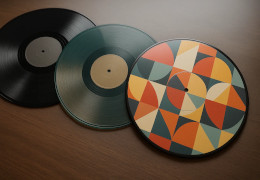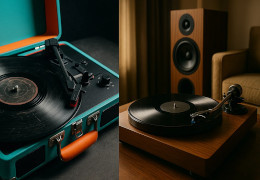Mission: Impossible – The Final Reckoning (DVD/Blu-ray/4K): is it worth buying?
Ethan Hunt’s latest mission lands on home video. Here’s a clear-buying guide: why 4K makes sense, when Blu-ray or DVD is enough, and when you might want to wait.
The film at a glance (no spoilers)
Mission: Impossible – The Final Reckoning is the saga’s eighth entry, directed by Christopher McQuarrie and starring Tom Cruise as Ethan Hunt. Familiar faces return, new ones join, and the set-pieces go big—very big. Expect a hefty runtime and the kind of practical stunt work this franchise is known for.
Why buy 4K / Blu-ray / DVD
🎥 4K Ultra HD: reference quality
- Maximum detail for landscapes, textures, and extreme stunts; aerial and underwater sequences gain depth and micro-contrast.
- Premium immersive audio (e.g., Dolby Atmos) for chases, explosions, and spatial effects.
- Often the best packaging and more technical extras—ideal for home-theater setups.
💿 Blu-ray: best value
- Excellent 1080p encode with robust compression and engaging multichannel audio—even without a high-end sound system.
- Special features (making-of, deleted scenes, commentary) typically match the 4K package at a lower price.
- Perfect if you own a Full HD TV or a 4K TV without a dedicated audio system.
📀 DVD: compatibility and cost
- Works on any player and older PCs; lowest price point and maximum compatibility.
- Standard-definition video—fine for secondary TVs or smaller screens.
- Usually fewer extras than Blu-ray/4K.
Reasons to buy (now)
- Technical showcase: McQuarrie’s direction and Cruise’s stunt work truly shine on disc; 4K brings extra sharpness, grain fidelity, and dynamic range—especially in high-speed and underwater scenes.
- Demo-worthy audio: immersive mixes with precise dynamics and clearer dialogue than many streaming tracks.
- Special features & collectability: behind-the-scenes, location spotlights, training features—physical releases feel “definitive.”
- Legacy payoffs: callbacks and returning characters give emotional closure for long-time fans.
Reasons you might not buy (yet)
- Long runtime: the opening packs a lot of exposition; if you crave wall-to-wall action, the pacing may feel uneven in spots.
- Day-one pricing: 4K editions can be pricey; without a 4K TV + player + sound system, benefits shrink.
- Continuity-heavy: frequent nods to previous films—less effective if you’re not up to speed on the saga.
- Waiting for deluxe editions: steelbooks or special box sets might be worth the wait if you’re a collector.
Trivia & behind-the-scenes
- Legacy return: a familiar face from the 1996 original pops back in, a neat treat for continuity lovers.
- Ambitious underwater sequence: an intense set-piece was shot in a massive tank on a rotating gimbal—parts reportedly trimmed for pacing.
- Practical stunts first: Cruise flew vintage aircraft and trained extensively to keep shots as real as possible, limiting reliance on CGI.
Which format should you pick? (quick guide)
4K TV + sound system?
Go 4K UHD for top-tier image and Atmos-grade sound; the big set-pieces benefit most.
4K/Full HD TV without audio setup?
Blu-ray offers the best cost/quality ratio, with excellent upscaling on 4K TVs.
Secondary TV / tight budget?
DVD wins on compatibility and price—quality is lower but fine for small screens.
Shop now (DVD / Blu-ray / 4K)
FAQ / quick glossary
- Does the 4K edition include a 1080p Blu-ray?
- Often yes (combo packs). Handy if you have multiple players at home—check the product page first.
- Atmos vs 5.1—what’s the difference?
- Height channels add vertical effects (helicopters, rain, echo). You get better spatial cues and clearer dialogue.
- Are the extras the same on 4K and Blu-ray?
- Usually yes; sometimes extras live on the included Blu-ray within the 4K package.
Verdict
If you love the franchise and have the gear to do it justice, 4K UHD is the way to go. With a 4K TV but no dedicated audio setup, Blu-ray is the smartest buy. On a budget or for a secondary room, DVD gets the job done. Either way, this is a release that truly rewards physical media—action, cinematography, and sound design are meant to be both seen and felt.


















